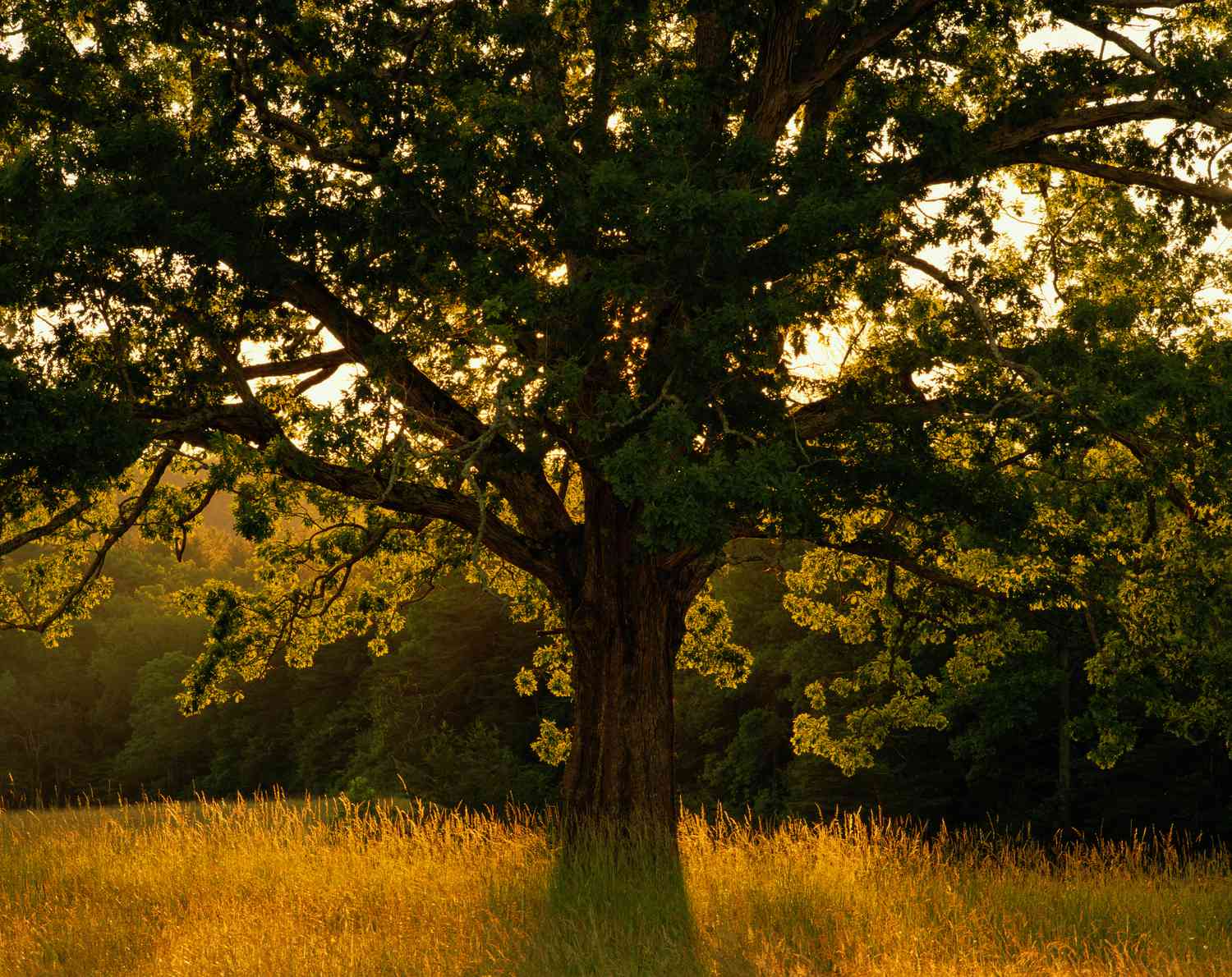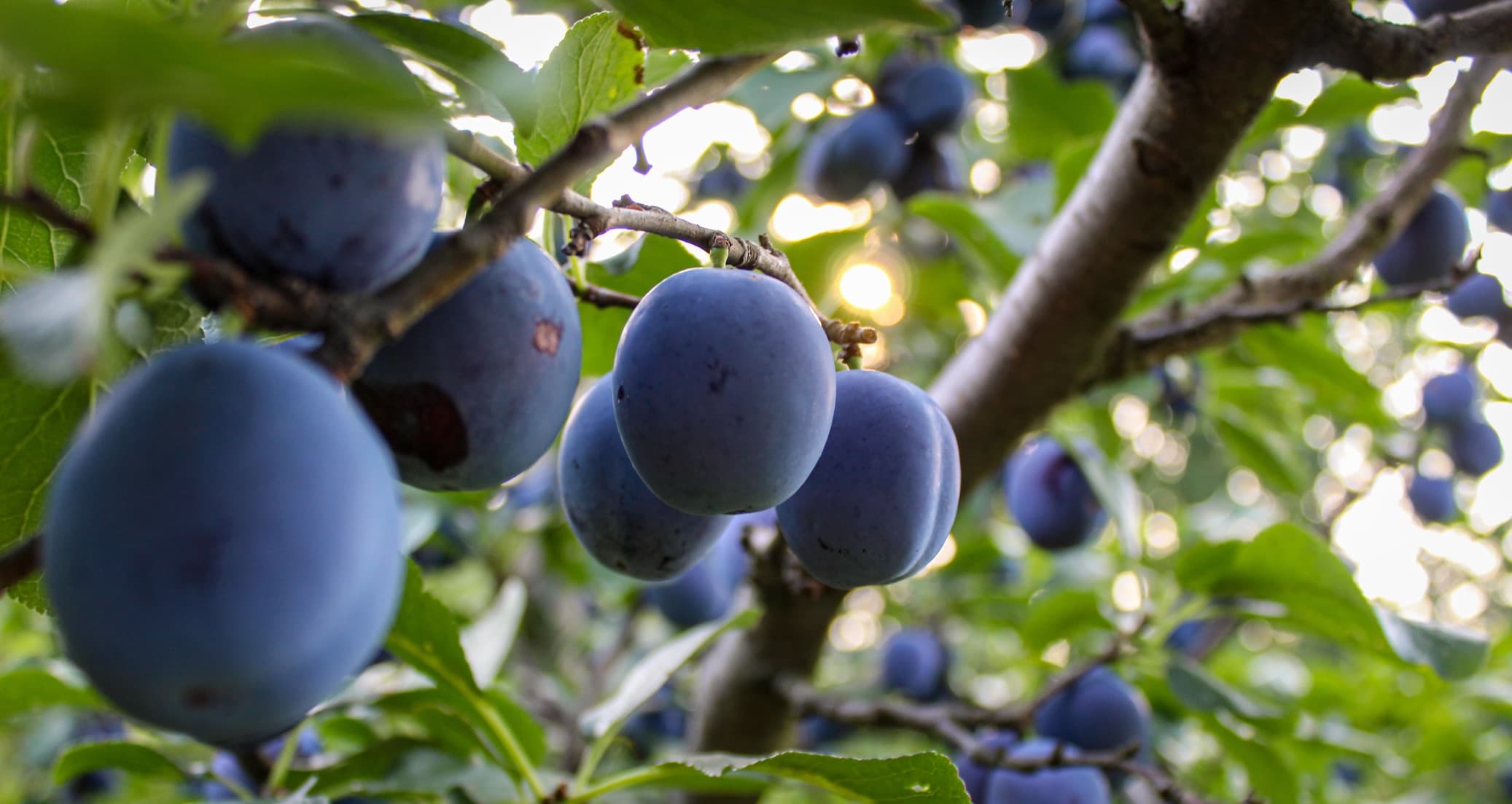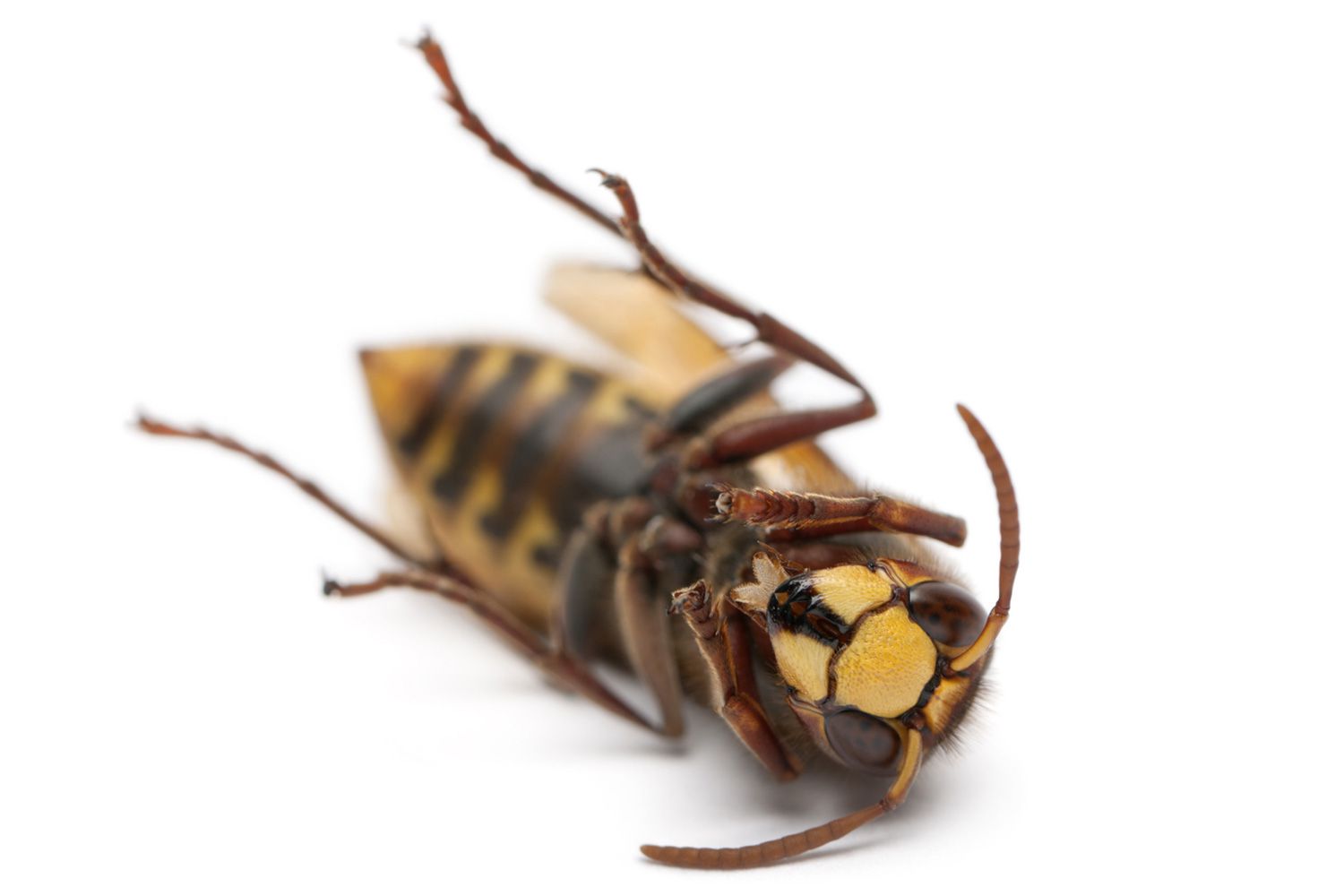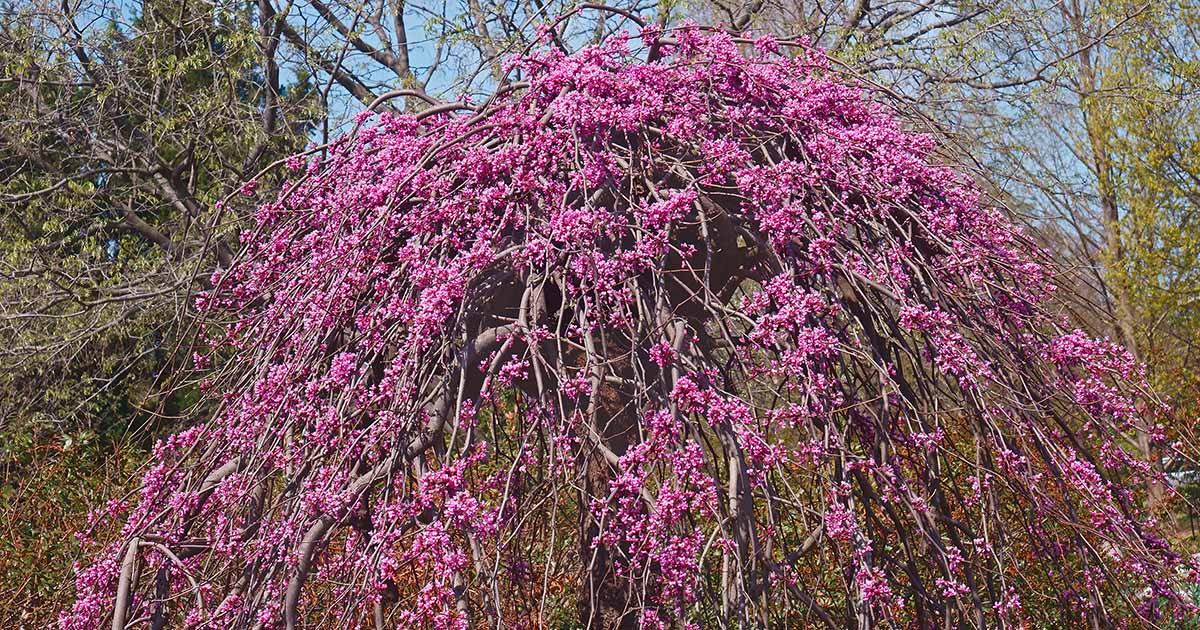Home>Gardening Techniques>Plant Care>When To Trim Shrubs In Fall


Plant Care
When To Trim Shrubs In Fall
Modified: January 22, 2024
Learn when is the best time to trim shrubs in the fall for optimal plant care. Discover expert tips and guidelines for pruning your shrubs during this season.
(Many of the links in this article redirect to a specific reviewed product. Your purchase of these products through affiliate links helps to generate commission for Chicagolandgardening.com, at no extra cost. Learn more)
Table of Contents
- Introduction
- Factors to Consider Before Trimming Shrubs in Fall
- Benefits of Trimming Shrubs in Fall
- Shrubs That Should Not Be Trimmed in Fall
- Best Time to Trim Different Types of Shrubs in Fall
- Step-by-Step Guide to Trimming Shrubs in Fall
- Tools and Equipment Needed for Trimming Shrubs in Fall
- Common Mistakes to Avoid When Trimming Shrubs in Fall
- Conclusion
Introduction
Welcome to the world of plant care, where taking care of your shrubs becomes a rewarding and fulfilling experience. Trimming shrubs is an essential practice that helps maintain their health, shape, and overall appearance. While trimming can be done throughout the year, fall is a particularly crucial time for this task.
Fall pruning ensures that your shrubs are well-prepared for the upcoming winter months. It allows them to enter dormancy with proper structure and encourages optimal growth in the following spring. However, it is important to understand the factors involved in determining when to trim your shrubs in the fall.
In this article, we will explore the factors to consider before trimming shrubs in the fall, the benefits of fall trimming, shrubs that should not be trimmed during this season, and the best time to trim different types of shrubs. Additionally, we will provide a step-by-step guide on how to trim your shrubs in the fall, along with a list of essential tools and equipment required for the task.
By following these guidelines, you can ensure that your shrubs thrive and maintain their optimal health and beauty throughout the year. So let’s dive in and explore the wonderful world of fall shrub trimming!
Factors to Consider Before Trimming Shrubs in Fall
Before diving into the trimming process, there are several factors that you should consider to determine if your shrubs are ready for a fall trim. These factors will help you make an informed decision and ensure the health and vitality of your plants.
First and foremost, consider the specific requirements of the shrub species you have in your garden. Different types of shrubs have varying growth habits and pruning needs. Some shrubs, such as spring-flowering varieties, set their flower buds in the fall. Trimming these shrubs in the fall may result in removing potential blooms for the following spring. On the other hand, shrubs that bloom in the summer or on new growth, like butterfly bushes or hydrangeas, can tolerate fall trimming without any negative impact on their flowering potential.
The overall health of the shrub is another essential factor to consider. If a shrub is stressed, diseased, or damaged, it is wise to address these issues before pruning. Trimming a stressed or weakened shrub can further weaken it and impair its ability to recover. It is advisable to consult a professional or a reputable gardening resource to diagnose and address any underlying issues before proceeding with pruning.
Consider the weather conditions in your region during the fall season. Extreme weather conditions like heavy frost or sudden temperature drops can be detrimental to recently trimmed shrubs. Late fall pruning also leaves fresh cuts exposed to the harsh winter elements, increasing the risk of damage and disease. It is generally recommended to complete fall pruning at least four to six weeks before the first frost or freeze to allow sufficient time for the shrubs to recover.
Lastly, consider the growth rate and natural shape of the shrub. If you have a fast-growing shrub, it may require more frequent pruning to maintain its desired shape and size. Conversely, slower-growing shrubs may need less frequent pruning. Additionally, consider the natural growth habit of the shrub and its space requirement. Some shrubs naturally grow in a more compact and tidy form, while others have a more sprawling or cascading growth habit. Pruning should be done in a way that enhances the natural shape of the shrub while promoting healthy growth.
By taking these factors into account, you can determine the appropriate timing and extent of pruning for your shrubs in the fall. This will help ensure that your plants remain healthy, vibrant, and aesthetically pleasing all year round.
Benefits of Trimming Shrubs in Fall
Trimming your shrubs in the fall offers numerous benefits that contribute to the overall health and appearance of your plants. Let’s explore some of the advantages of fall pruning:
1. Enhanced Plant Health: Fall trimming helps promote the overall health of your shrubs. By removing dead, damaged, or diseased branches, you prevent the spread of pests and diseases. Trimming also improves air circulation and sunlight penetration, reducing the risk of fungal infections and promoting healthy growth.
2. Shape and Structure: Trimming in the fall allows you to shape and maintain the desired form of your shrubs. Pruning helps create a well-balanced and visually appealing structure by removing excessive growth, crossed branches, and unwanted suckers. It gives your shrubs a neat and tidy appearance, enhancing curb appeal.
3. Flowering and Fruiting: For shrubs that bloom on new wood, fall pruning encourages the growth of fresh branches, leading to an abundant display of flowers in the following season. This is particularly beneficial for shrubs like butterfly bushes and hydrangeas. Additionally, proper trimming can promote fruit production in fruit-bearing shrubs, such as blueberries or raspberries.
4. Encourages Spring Growth: Trimming in the fall stimulates new growth in the spring. By removing old and weak branches, you redirect the plant’s energy towards producing new shoots and foliage. This results in vigorous growth once spring arrives, ensuring a healthy and vibrant shrub.
5. Pest Prevention: Fall pruning helps to eliminate hiding spots and breeding grounds for pests. By removing dead branches and debris, you reduce the risk of pest infestations. Trimming also allows easier identification of pests or signs of disease, enabling you to take appropriate measures to treat and prevent further damage.
6. Winter Preparation: Trimming in the fall prepares your shrubs for the harsh winter months. Pruning removes weak or damaged branches that may be susceptible to breakage under the weight of snow or ice. It also mitigates the risk of pest and disease carrying over to the next season, giving your shrubs a better chance of thriving in the following year.
By reaping these benefits through fall shrub trimming, you can maintain the vitality, beauty, and longevity of your plants. Embrace the art of pruning, and watch your shrubs flourish year after year!
Shrubs That Should Not Be Trimmed in Fall
While fall is an ideal time for shrub trimming, there are certain shrub species that should not be pruned during this season. Understanding which shrubs to avoid trimming in the fall is crucial to ensure their optimal growth and blooming potential. Let’s explore some of these shrubs:
1. Spring-Flowering Shrubs: Shrubs that produce flowers in early spring, such as lilacs, forsythias, and azaleas, should generally not be pruned in the fall. These shrubs set their flower buds in the late summer or early fall, and pruning them during this time may remove the buds, resulting in fewer blooms the following spring. It is best to prune these shrubs immediately after they have finished flowering.
2. Evergreen Shrubs: Evergreen shrubs, like boxwoods and junipers, should be pruned with caution in the fall. While light pruning for shaping or removing dead branches is acceptable, heavy pruning can be stressful for these plants, especially as winter approaches. The best time to prune evergreen shrubs is in the late spring or early summer, allowing them ample time to recover and produce new growth before winter.
3. Fall-Blooming Shrubs: Shrubs that bloom in the fall, such as autumn sage (Salvia greggii) or beautyberry (Callicarpa spp.), should not be pruned in the fall. These shrubs typically produce flowers on new wood, meaning the blooms come from branches that grew during the current growing season. Pruning them in the fall may remove the potential for blooms, so it is advisable to wait until after they have finished flowering before pruning.
4. Cold-Sensitive Shrubs: Shrubs that are sensitive to cold temperatures, such as certain varieties of hibiscus or bougainvillea, should be protected from heavy pruning in the fall. Drastic pruning can expose the shrubs to potential damage from freezing temperatures, as they may not have sufficient time to regrow and strengthen before winter. It is advisable to prune these shrubs in the early spring, just before their active growth period.
While these shrubs should not be pruned in the fall, it is important to note that routine maintenance, such as removing dead or damaged branches, can still be performed. Light pruning for shaping and maintenance purposes is generally safe. However, if you are unsure about pruning specific shrubs, it is always best to consult with a local horticulturist or gardening expert for guidance.
Understanding which shrubs to avoid trimming in the fall ensures that you do not inadvertently hinder their growth or blooming potential. By following the appropriate pruning schedule for these shrubs, you can maintain their health, beauty, and longevity for years to come.
Best Time to Trim Different Types of Shrubs in Fall
Trimming shrubs in the fall is an essential practice for maintaining their health and appearance. However, the timing of pruning may vary depending on the specific type of shrub you have in your garden. Let’s explore the best time to trim different types of shrubs in the fall:
1. Early Fall Trimming: Some shrubs benefit from early fall trimming, usually in the early to mid-fall months. Examples of shrubs that can be pruned during this time include:
- Lilacs (Syringa spp.): Trim lilacs immediately after they finish flowering in the spring, or in early fall before new growth begins.
- Spirea (Spirea spp.): Prune spirea after they have finished blooming in the summer or in early fall before new growth emerges.
- Butterfly Bush (Buddleia spp.): Trim butterfly bush in early fall to maintain its size and shape.
- Potentilla (Potentilla spp.): Prune potentilla in early fall to remove spent flowers and encourage new growth.
2. Mid-Fall Trimming: Many shrubs are best pruned during the mid-fall months. This timing allows enough time for the shrubs to recover before the arrival of freezing temperatures. Shrubs that are typically pruned in mid-fall include:
- Hydrangea (Hydrangea spp.): Trim hydrangeas after they have finished flowering in the summer or early fall. The flowers act as a protective layer during the winter months.
- Smoke Tree (Cotinus spp.): Prune smoke tree in mid-fall after the foliage has fallen, shaping it as desired.
- Viburnum (Viburnum spp.): Trim viburnum in mid-fall to remove any dead or damaged branches and to shape the shrub.
- Summersweet (Clethra alnifolia): Prune summersweet in mid-fall to remove any broken or crossing branches and encourage new growth.
3. Late Fall Trimming: While it is generally best to complete fall pruning at least four to six weeks before the first frost, there are a few shrubs that can withstand trimming even in late fall. Some examples include:
- Beautyberry (Callicarpa spp.): Trim beautyberry in late fall after the berries have fallen, removing any dead or damaged branches and shaping the shrub.
- Pyracantha (Pyracantha spp.): Prune pyracantha in late fall after the berries have been consumed or fallen off, removing any excessive growth and shaping the shrub.
It is important to note that these pruning times are general guidelines and may vary depending on your specific climate and growing conditions. To ensure the best results, it is always recommended to research the specific pruning needs of the shrubs in your garden or consult with a local gardening expert.
By understanding the best time to trim different types of shrubs in the fall, you can ensure that your plants receive the proper care and maintenance they need to flourish year after year.
Step-by-Step Guide to Trimming Shrubs in Fall
Trimming shrubs in the fall requires careful attention and proper technique to ensure the best results. By following this step-by-step guide, you can effectively trim your shrubs and promote their health and appearance:
Step 1: Assess the shrub: Begin by evaluating the overall health and structure of the shrub. Identify any dead, damaged, or diseased branches that need to be removed. Consider the desired shape and size you want the shrub to maintain.
Step 2: Gather your tools: Prepare all the necessary tools and equipment you will need for trimming, including pruning shears, loppers, hand saw, gloves, and safety goggles. Ensure that your tools are clean and sharp to make clean cuts.
Step 3: Remove dead or damaged branches: Start by cutting out any dead, damaged, or diseased branches. Make clean angled cuts just above the nearest healthy bud or branch junction. This will help prevent the spread of disease and promote healthy regrowth.
Step 4: Thin out excessive growth: If your shrub has dense growth, thin out some of the branches to allow better air circulation and light penetration. Remove branches that are crossing or rubbing against each other. Aim to create an open and balanced structure.
Step 5: Shape the shrub: Use your pruning shears or loppers to shape the shrub according to your preferences. Start by trimming any excessively long branches to maintain a neat and compact form. Make cuts just above a bud or branch junction to encourage new growth.
Step 6: Prune for size control: If your shrub has outgrown its intended space, selectively prune some branches to control its size. Remove any branches that are extending beyond the desired boundaries. Make the cuts just above a bud or branch junction, ensuring a natural and visually pleasing shape.
Step 7: Step back and assess: After completing the trimming, step back and evaluate the shrub. Ensure that it maintains its natural shape and looks balanced. Make any final adjustments if necessary.
Step 8: Clean up and dispose: Remove all the cut branches and debris from around the shrub to prevent the spread of diseases or pests. Dispose of the trimmings properly or compost them if suitable.
Step 9: Mulch and water: After trimming, apply a layer of organic mulch around the base of the shrub to help retain moisture and suppress weeds. Water the shrub deeply to promote root establishment and recovery.
By following these step-by-step instructions, you can trim your shrubs effectively and promote their health and aesthetic appeal. Remember to always prioritize safety, use sharp and clean tools, and consult gardening resources or professionals if you have any specific concerns about trimming certain types of shrubs.
Tools and Equipment Needed for Trimming Shrubs in Fall
When it comes to trimming shrubs in the fall, having the right tools and equipment is essential for achieving clean, precise cuts and maintaining the health of your plants. Here is a list of the tools and equipment you will need:
1. Pruning Shears: Pruning shears, also known as hand pruners or secateurs, are an essential tool for trimming small branches and stems. Look for a high-quality pair with a sharp, bypass or anvil cutting blade for clean cuts without crushing the plant tissue.
2. Loppers: Loppers are longer-handled pruning tools designed to cut thicker branches. They provide more leverage and reach, allowing you to trim larger branches with ease. Choose loppers with sharp bypass or anvil blades and ergonomic handles for comfortable use.
3. Hand Saw: A hand saw is necessary for cutting through thicker branches that cannot be pruned with shears or loppers. Select a pruning saw with a sharp blade and a comfortable grip for efficient and precise cutting.
4. Gloves: Invest in a durable pair of gardening gloves to protect your hands from thorns, splinters, and other potential injuries while pruning. Look for gloves made of sturdy materials like leather or synthetic fibers that provide both comfort and dexterity.
5. Safety Goggles: Protect your eyes from debris and flying branches by wearing safety goggles. This is especially important when using tools like loppers or saws, as they can generate wood chips or sawdust that may cause eye irritation or injury.
6. Pruning Sealant: Pruning sealant is an optional but useful tool for sealing large pruning cuts on shrubs, particularly for vulnerable species or in regions with harsh winters. It helps prevent diseases and pests from entering the exposed wood, promoting healthy healing.
7. Garden Pruning Bag or Trash Container: Having a designated bag or container for collecting and disposing of the cut branches and trimmings will make the cleanup process efficient and organized. Ensure it is sturdy and large enough to hold the debris generated during the trimming process.
Extra Tips: Keep your tools clean and sharp by wiping them after use and sharpening the blades regularly. Clean cuts reduce the risk of introducing infections or diseases to your shrubs. Additionally, consider using a ladder if you need to reach high branches safely and avoid overextending your reach.
Having the right tools and equipment for trimming shrubs in the fall will make the task easier, safer, and more effective. By investing in quality tools and taking proper care of them, you can ensure the longevity and performance of your pruning equipment for years to come.
Common Mistakes to Avoid When Trimming Shrubs in Fall
Trimming shrubs in the fall is a delicate process that requires careful attention and proper technique. To ensure the health and vitality of your shrubs, it’s important to avoid common mistakes that can hinder their growth or cause damage. Here are some mistakes to avoid when trimming shrubs in the fall:
1. Incorrect Timing: One of the most common mistakes is pruning too late in the fall. Late pruning does not give the shrub enough time to recover before the onset of freezing temperatures. Aim to complete fall pruning at least four to six weeks before the first frost or freeze to allow the shrub sufficient time to heal and prepare for winter.
2. Over-pruning: Another common mistake is pruning too aggressively. Removing more than 1/3 of the shrub’s growth can stress the plant and impede its ability to recover. It’s important to maintain the natural shape and structure of the shrub while selectively trimming only what is necessary.
3. Neglecting Tool Maintenance: Using dull or dirty tools can lead to messy and uneven cuts that can damage the shrub. Regularly clean and sharpen your pruning tools to ensure clean and precise cuts. This will promote quick healing and reduce the risk of introducing diseases or pests to the shrub.
4. Ignoring Safety Precautions: Safety should always be a top priority when trimming shrubs. Avoiding safety goggles, gloves, and proper ladder use can result in accidents, injuries, or damage to the shrub. Protect yourself and take the necessary precautions to ensure a safe and successful pruning experience.
5. Pruning Flowering Shrubs at the Wrong Time: It’s crucial to understand the blooming cycle of your shrubs before trimming. Pruning flowering shrubs that bloom on old wood, such as lilacs or forsythias, in the fall will remove next year’s flower buds. Research the blooming pattern of your shrubs and trim them at the appropriate time to avoid sacrificing blooms.
6. Excessive Removal of Foliage: Removing too much foliage during fall pruning can leave the shrub vulnerable to winter damage. The foliage provides protection and insulation during colder temperatures. Avoid excessively trimming foliage and focus on removing dead or diseased branches instead.
7. Improper Pruning Cuts: Making improper cuts can lead to unhealthy regrowth or open wounds that are susceptible to diseases. Use clean and sharp tools to make angled cuts just above the nearest bud or branch junction. Avoid leaving stubs or cutting too close, as both can impede proper healing.
8. Lack of Research: Different shrubs have unique pruning requirements and preferences. Neglecting to research the specific needs of your shrubs can lead to improper pruning techniques or incorrect timing. Take the time to understand the characteristics and pruning recommendations for each type of shrub in your garden.
By avoiding these common mistakes, you can ensure that your shrubs are properly cared for and maintain their health and beauty. Remember to prune with care, prioritize safety, and always consult reliable resources or professionals if you are unsure of the proper techniques for trimming specific shrubs.
Conclusion
Trimming shrubs in the fall is a crucial aspect of plant care, ensuring the health, appearance, and longevity of your shrubs year-round. By considering the factors that determine the timing of fall pruning, such as the type of shrub, its health, and the weather conditions, you can make informed decisions and achieve the best results.
Throughout this article, we’ve explored the benefits of fall trimming, shrubs that should not be pruned during this season, the best time to trim different types of shrubs, and provided a step-by-step guide to help you trim your shrubs effectively. We’ve also highlighted the tools and equipment you’ll need and discussed common mistakes to avoid when pruning in the fall.
Remember, fall pruning enhances plant health, promotes proper structure, and prepares shrubs for the winter months. However, it’s important to approach trimming with caution, ensuring you prune at the right time, use proper techniques, and prioritize safety.
As you embark on your fall shrub trimming journey, take the time to understand the specific needs and requirements of your shrubs. Research the blooming patterns, growth habits, and pruning recommendations for each variety you have in your garden.
By following the guidelines outlined in this article and leveraging your newfound knowledge, you can confidently prune your shrubs in the fall, promoting their health, vitality, and aesthetic appeal. Enjoy the process of nurturing and caring for your shrubs, and relish in the beauty they bring to your outdoor space throughout the seasons.










